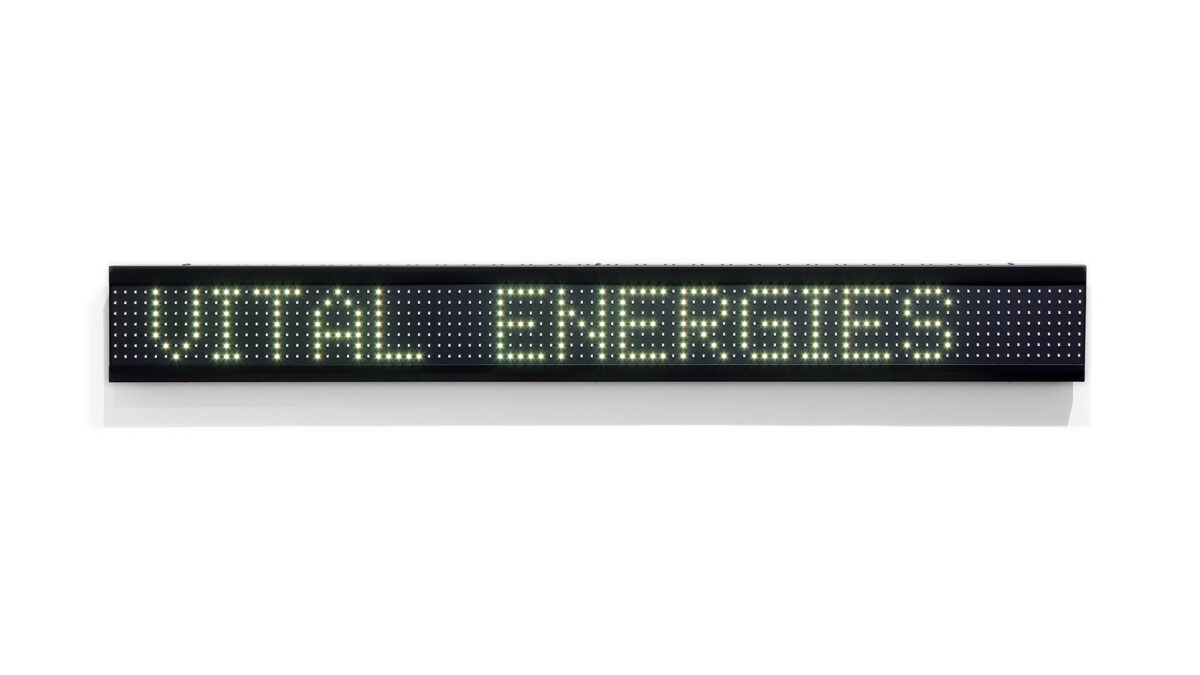
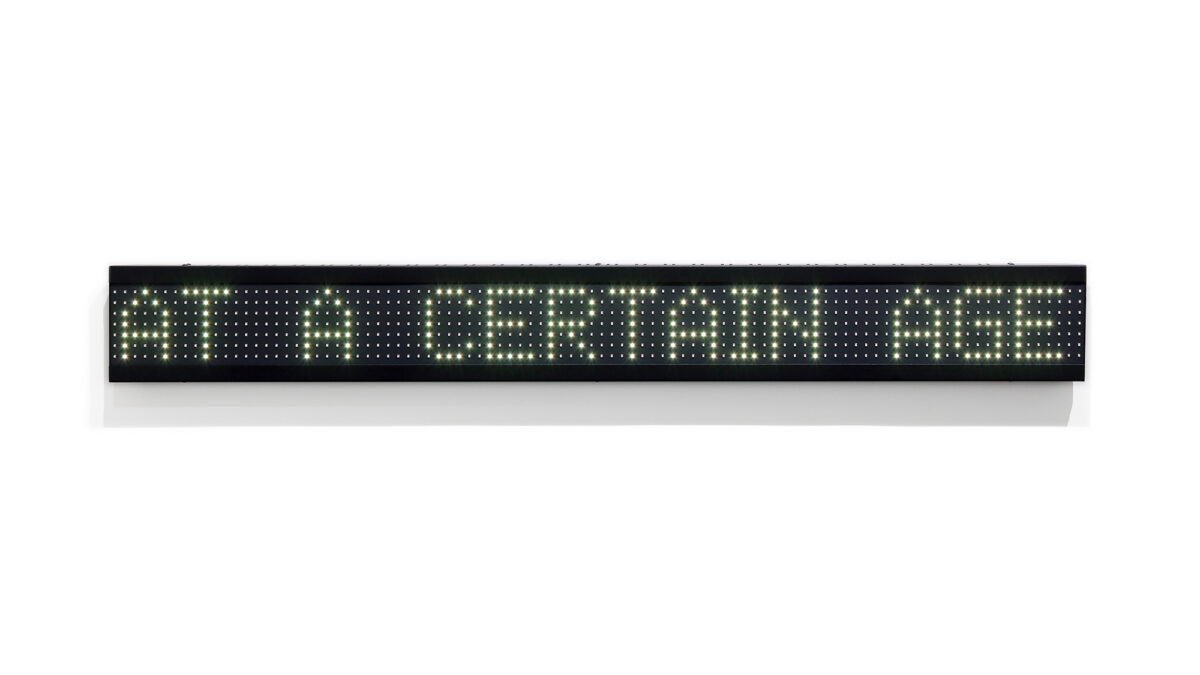
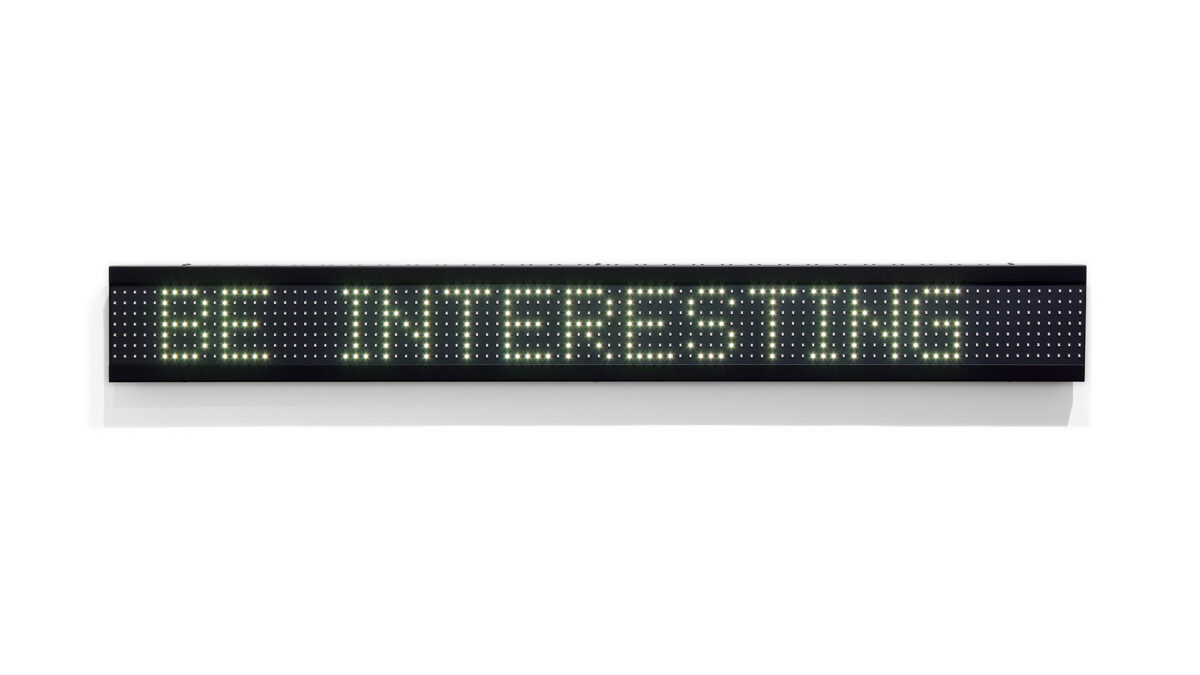
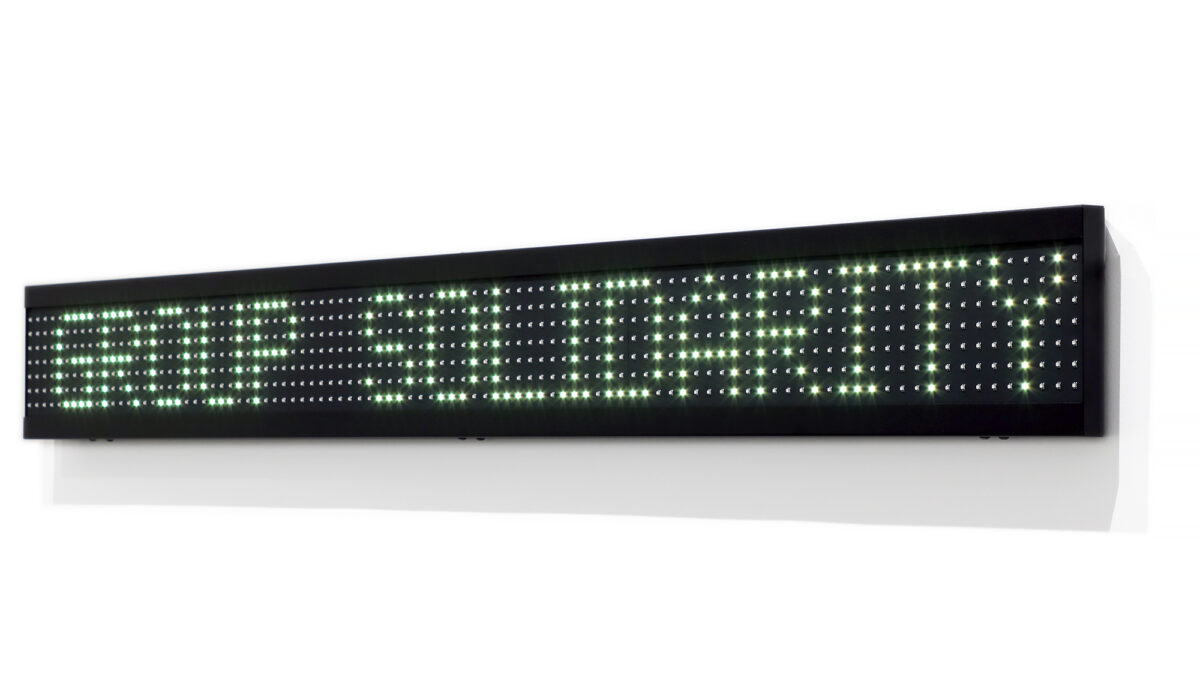
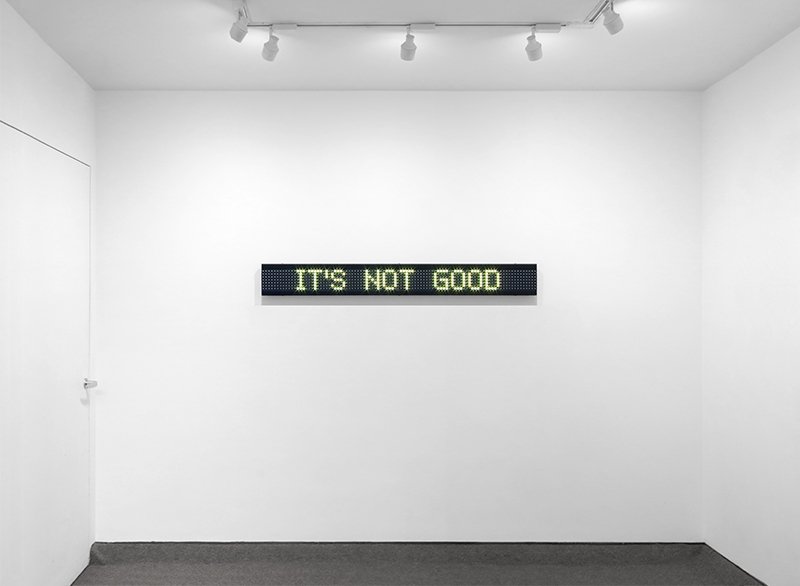
Edition of 4
6 1/2 x 57 3/4 x 2 inches (16.5 x 146.7 x 5.1 cm)
Signed on affixed label on reverse
(Inventory #32051)
Exhibited January 13, 2022 – April 14, 2022
Edition of 4
6 1/2 x 57 3/4 x 2 inches (16.5 x 146.7 x 5.1 cm)
Signed on affixed label on reverse
(Inventory #32051)
Exhibited January 13, 2022 – April 14, 2022
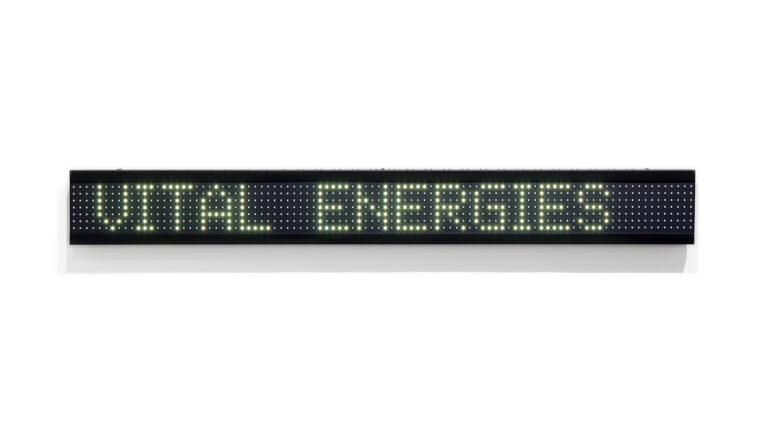
Jenny Holzer wrote “Truisms” to resemble existing truisms, maxims, and clichés. Each “Truism” distills difficult and contentious ideas into a seemingly straightforward fact. The terseness and resolve of the language invites easy agreement, but this feeling is complicated by the contradictions apparent when the various statements are read together. Privileging no single viewpoint, taken together, the “Truisms” examine the social construction of beliefs, mores, and truths. “There’d be left-wing ones, there’d be right-wing ones, there would be loony ones, there’d be heartland ones,” Holzer explained of the variety of phrases. Holzer hoped they would focus people’s awareness of the ‘usual baloney they are fed.’ “Truisms” confirms that how we read a phrase has everything to do with where it appears. The “Truisms” first were shown on anonymous street posters that were wheat pasted throughout downtown Manhattan, and subsequently have appeared on T-shirts, hats, electronic signs, stone floors, projections and benches, among other supports. Krakow Witkin Gallery presents the 1984 LED, “Truisms” (one from the edition of four is also in the Tate Modern’s collection).
Jenny Holzer has presented her astringent ideas, arguments, and sorrows in public places and international exhibitions, including the Venice Biennale, the Guggenheim Museums in New York and Bilbao, the Whitney Museum of American Art, and the Louvre Abu Dhabi. Her medium, whether a T-shirt, plaque, or LED sign, is writing, and the public dimension is integral to her work. Starting in the 1970s with her New York City street posters and continuing through her light projections on landscape and architecture, her practice has rivaled ignorance and violence with humor and kindness.
American installation and conceptual artist. Her studies included general art courses at Duke University, Durham, NC (1968-70), and then painting, printmaking and drawing at the University of Chicago before completing her BFA at Ohio University, Athens (1972). In 1974 she took summer courses at the Rhode Island School of Design, Providence, entering its MFA program in 1975 and beginning her first work with language, installation and public art. Holzer moved to New York in 1977. Her first public works, Truisms (1977-79), appeared in the form of anonymous broadsheets pasted on buildings, walls and fences in and around Manhattan. Commercially printed in cool, bold italics, numerous one-line statements such as ‘Abuse of power comes as no surprise’ and ‘There is a fine line between information and propaganda’, were meant to be provocative and elicit public debate. Thereafter Holzer used language and the mechanics of late 20th-century communications as an assault on established notions of where art should be shown, with what intention and for whom. Her texts took the forms of posters, monumental and electronic signs, billboards, television and her signature medium, the LED (light emitting diode) sign. Other works appeared on T-shirts, tractor hats, stickers, metal plaques, park benches and sarcophagi. The LED signs have been placed in high-impact public spaces such as Times Square, New York, as well as in art galleries and museums.
Bibliography
Jenny Holzer: Signs (exh. cat., Des Moines, IA, A. Cent., 1986-7) Jenny Holzer (exh. cat. by D. Waldman, New York, Guggenheim, 1989-90) M. Auping: Jenny Holzer (New York, 1992)
Copyright material reproduced courtesy of Oxford University Press, New York
10 Newbury Street, Boston, Massachusetts 02116
617-262-4490 | info@krakowwitkingallery.com
The gallery is free and open to the public Tuesday – Saturday, 10am – 5:30pm